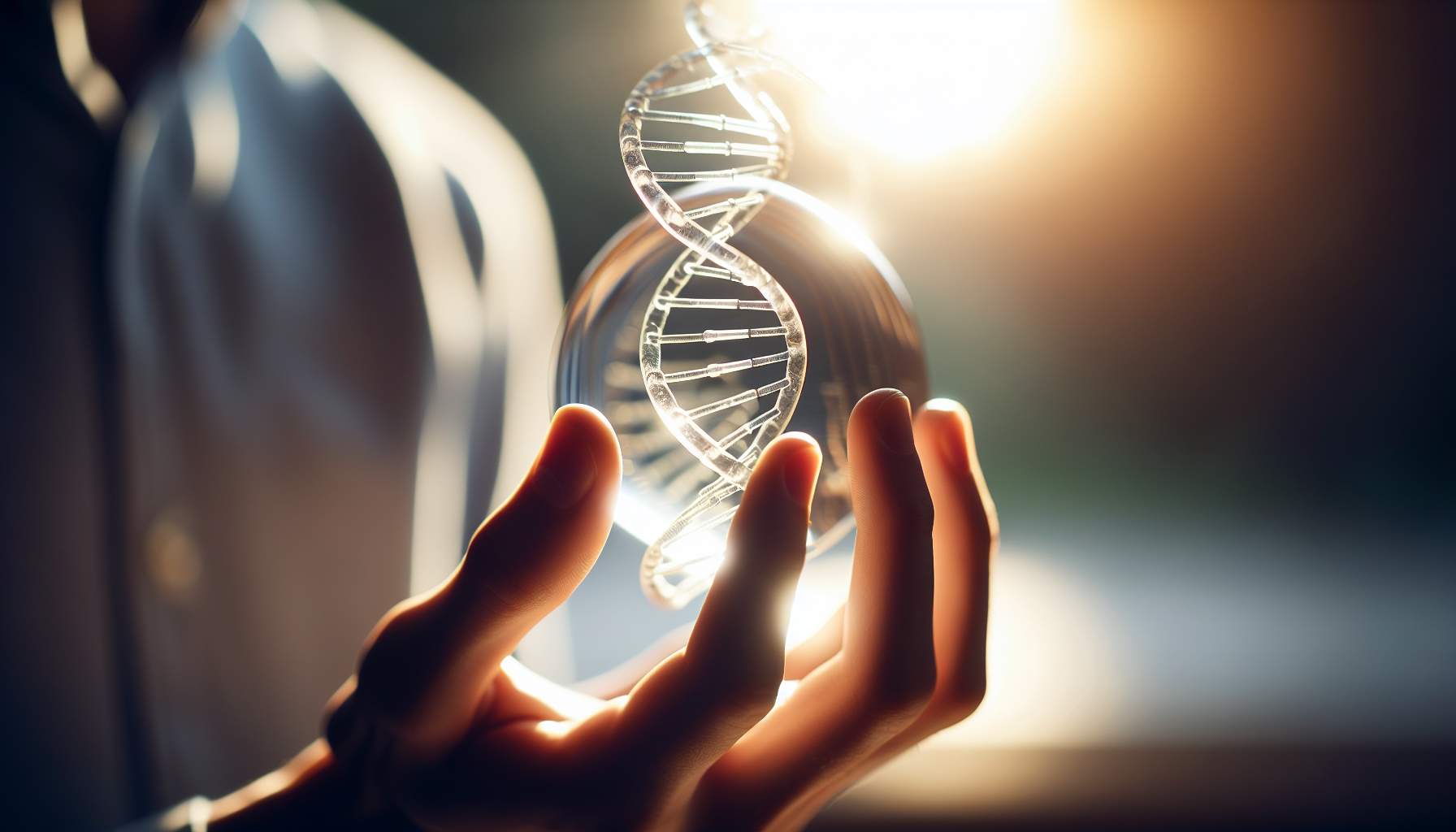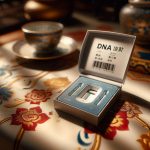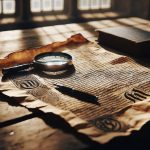Double Match Triangulator is a cutting-edge software designed for Windows, specifically tailored for those delving into the world of autosomal DNA analysis. By harnessing the power of this tool, users can effortlessly merge segment match data from two or more individuals. This fusion not only simplifies but also automates the tedious process of analyzing your segment match data. Moreover, it takes things a step further by integrating common ancestor information that you input, enhancing the depth and accuracy of your genetic research.
In an enlightening discussion with Louis Kessler, the brain behind Double Match Triangulator, he sheds light on what sets this technology apart. Kessler’s insights reveal how this tool isn’t just another gadget in the toolbox but a game-changer in how we approach genetic analysis. He also hints at several exciting trends and developments we can anticipate in the DNA analysis arena over the next few years.
What makes Double Match Triangulator stand out is not just its capacity to streamline complex data analysis but its role in pioneering new pathways for researchers and enthusiasts alike to unlock their ancestral pasts with unprecedented ease and precision.
The Origin and Development of Double Match Triangulator: What Inspired Its Creation and Its Progress to Date
Throughout my years, genealogy has been a significant part of my life. With a background enriched by degrees in statistics, computer science, and programming, I’ve dedicated myself to delving into the depths of family history. Now retired from a four-decade career at the local electric company, I have ample time to pursue this passion full-time.
In early 2016, an opportunity to deepen my knowledge in this field presented itself through an Unlock the Past genealogy cruise around New Zealand and Australia. The event was a gathering hub for about 100 enthusiasts like myself, featuring numerous experts including the renowned Judy Russell who specializes in genetic genealogy. Her insightful talk on DNA piqued my interest and led me down an unexpected path.
Upon her advice regarding DNA testing for my nonagenarian uncle, I embarked on a fascinating journey that unveiled surprising aspects of ancestry through genetic markers. Initially apprehensive about what these tests might reveal—fearing unforeseen complications or discovering no familiar connections among the results—my skepticism was quickly overturned when his test showed an astonishing 7,000 matches; a figure far exceeding the average outcome most people received at that time.
Pondering over this anomaly led me to discover endogamy within our lineage—a common occurrence in closed communities but something I hadn’t considered would impact us so significantly. To make sense of these myriad connections and potentially unveil shared ancestors amongst them required more than just curiosity; it demanded technical intervention.
This necessity drove me back to my roots as a programmer where frustrations with manual data analysis on spreadsheets inspired the creation of a unique solution—a software tool designed specifically for analyzing complex DNA match lists efficiently through segment triangulation techniques. This method outlines direct ancestry lines by finding common segments between three individuals who likely share an ancestor.
Seizing upon the innovative nature of this tool, I entered it into RootsTech’s Innovator Showdown later that year—an appropriate platform given its pioneering approach towards solving intricate genealogical puzzles using technology. My experience underscores not just personal growth within the realm of genealogy but also highlights how embracing new methodologies can unearth profound insights into our familial pasts.
What insights can be gained by analyzing my DNA with Double Match Triangulator?
Many individuals are turning to DNA Painter, a unique tool that helps map out genetic connections on your chromosomes. This innovative program allows you to visually understand which parts of your DNA trace back to specific ancestors. It’s especially useful when trying to determine how you’re related to someone else. If both of you share DNA segments from an ancestor, this software can pinpoint the exact lineage, making it easier for you to conduct genealogical research and flesh out your family tree.
However, mapping out these connections manually on DNA Painter can be a tedious task, requiring you to examine each segment individually. Enter Double Match Triangulator, the game-changer in this process. This powerful tool simplifies things by automating the entire process. You simply input information about how each of your matches is related to you, and it organizes this data into a file that’s compatible with DNA Painter. This way, ancestral links are laid out clearly for you.
Beyond just mapping, Double Match Triangulator offers more sophisticated functionalities like triangulation and inferred matching. The former provides detailed insights into how every person in your match list is connected through common ancestors—a boon for digging deeper into familial ties. Inferred matching comes handy when dealing with relatives who have matches that don’t appear in your own list; it helps deduce potential connections indirectly.
These advanced features cut down significantly on the time and effort traditionally required for manual analysis and interpretation of genetic information. By leveraging such tools, tracing ancestry not only becomes more efficient but also opens up new possibilities in understanding our genealogical roots with greater precision and depth.
Can a beginner easily use this software?

Navigating this software is quite straightforward—a single interface and an in-depth help guide make it user-friendly. However, the catch lies in understanding DNA fundamentals for effective usage. Grasping what triangulation signifies in DNA matching is crucial to making sense of the output.
Without a basic grasp of DNA concepts, throwing data into the mix will only lead to confusion, leaving users puzzled and unable to leverage the tool’s full potential.
To bridge this gap, I run a blog dedicated not just to guiding individuals through the program but also to demystifying aspects related to DNA analysis. From interpreting segment matches to understanding triangulations, my blog aims to enlighten readers on these critical components essential for utilizing the software optimally.
What sets your service apart from 23andMe, MyHeritage, Ancestry, and Family Tree DNA?
The DNA testing landscape is bustling with innovation, thanks to the pioneering efforts of leading companies such as Ancestry, 23andMe, FamilyTree DNA, and MyHeritage. Each of these entities brings its unique tech touch to the table, enabling individuals to dive deep into their genealogical roots in ways previously deemed impossible.
Take for instance Ancestry‘s ThruLines feature. It’s like having a detective at your disposal, tirelessly working to bridge your DNA with extensive family trees, unveiling new familial ties you were oblivious to. Similarly, MyHeritage is on a parallel quest with its Theory of Family Relativity tool, aiming to make sense of how you’re connected to others by sifting through mountains of data.
On another innovative front, 23andMe sets itself apart by crafting an auto-generated family tree derived solely from your DNA matches — no trivial feat considering it does so without relying on any pre-existing family tree information. This approach not only simplifies lineage tracing but introduces a revolutionary way of understanding genetic connections.
Family Tree DNA takes a different yet equally fascinating route by dissecting your genetic matches into paternal and maternal sides. This clarity helps users easily categorize their connections and perhaps unearth relationships that are double-sided or belong equally to both parental lines.
Beyond these giants in the field lies a realm inhabited by third-party enthusiasts who take innovation up several notches. These creators offer advanced tools for deep-dive analyses into one’s genealogy using sophisticated techniques like clustering algorithms and DNA painting. Such methods can unravel complex familial puzzles by grouping shared matches or visually mapping out genetic connections.
Among notable mentions is the Double Match Triangulator — an ingenious blend that stands alone in its ability to analyze and display all possible triangulations among your matches. This unique perspective offered is unparalleled, providing depth and dimensionality unheard of elsewhere in current offerings.
In essence, we find ourselves amidst an exciting era where exploring our roots through DNA has been made incredibly accessible and insightful thanks to technological advancements spearheaded by industry leaders and bolstered by passionate third-party developers. The journey into understanding our ancestry has never been more fascinating or filled with possibility.
What projects are you currently involved in, and what do you aim to achieve later on?
In the ever-evolving landscape of software development, it’s crucial to keep abreast with changes and incorporate them into our projects. This was notably true for a program that had seemingly reached its zenith in functionality by February, only to unveil new layers of improvement upon further use. The key objective has been to enhance user experience by streamlining operations for those seeking an effortless approach to data analysis.
Delving into personal genome analysis sparked a curiosity that went beyond mere fascination. While traditional DNA testing methods serve well for genealogical pursuits, the advent of technology like PacBio is reshaping landscapes. Its capability to produce accurate long reads heralds a future where assembling a complete genome without external references might become commonplace. Such advancements could revolutionize understanding genetic heritage by allowing chromosome phasing directly from parents—a feat unimaginable with prior whole-genome analyses.
Parallelly, my journey with another venture, Behold, underscores my passion for genealogy software development. Despite taking a backseat due to my deep dive into DNA research post-retirement, recent months saw me returning to this project with renewed vigor. By weaving DNA insights into Behold, I aim at enriching family tree exploration, thus offering users more nuanced ways to connect with their ancestry.
In sum, the intersection of technology and genealogy presents unparalleled opportunities for innovation and discovery. As we stand on the brink of these frontiers, it’s exciting to ponder how much more there is left unexplored—waiting just within reach—to fundamentally transform our understanding of ourselves and our roots.




















